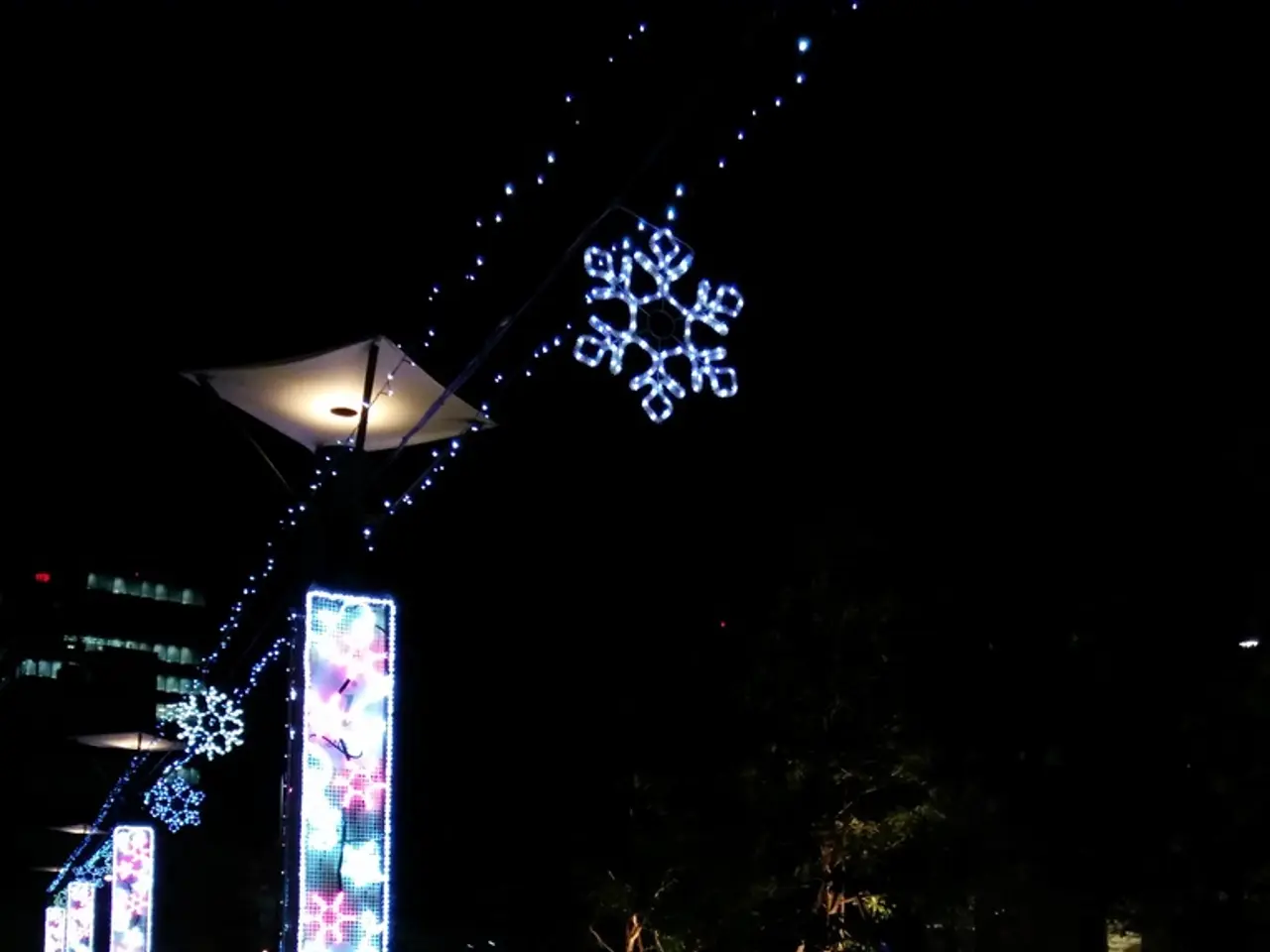Explosion following lightning strike close to the highway
Headline: Lightning-Sparked Wildfires Become Increasing Concern in Southern California Amidst Climate Change
Southern California is facing a heightened risk of wildfires, with lightning being a leading cause. The region's vulnerability to these fires has been exacerbated by the adverse effects of climate change, which have extended fire seasons, increased drought conditions, and created hotter, drier vegetation that ignites more easily.
The current incident did not result in a massive fire, but the conditions in Southern California make it more susceptible to such incidents. The persistence and intensification of drought in the region over the fall and winter of 2024-2025 have contributed to this increased vulnerability.
Lightning, a natural electrical discharge that occurs when charged regions in the atmosphere equalize, can cause significant damage to infrastructure and spark wildfires. In fact, the temperature of a lightning strike is hotter than the surface of the sun, reaching temperatures of up to 50,000 degrees Fahrenheit. A recent lightning strike near a busy roadway, as captured by the South California police department, ignited a fireball upon hitting a power line, causing flames to burst into the air. The incident resulted in traffic delays in the area and power outages.
The South California police department shared the video with the caption, "A bit too much excitement for a Monday."
Despite experiencing mild drought conditions compared to the rest of the West, Southern California has been affected. By the beginning of April 2025, drought had covered 44% of Southern California.
Climate change is predicted to bring more lightning, thunderstorms, and rainstorms to California, which could further increase the risk of wildfires. As climate warming progresses, the trend of more frequent and severe lightning-sparked wildfires in Southern California is expected to continue.
Sources:
- National Interagency Fire Center. (2025). Wildfire trends and climate change. Retrieved from https://www.nifc.gov/fireInfo/fireInfo_main.html
- California Department of Forestry and Fire Protection. (2025). Wildfire risk factors in California. Retrieved from https://www.fire.ca.gov/community/wildfire-risk/
- National Oceanic and Atmospheric Administration. (2025). Climate change and wildfires in California. Retrieved from https://www.climate.gov/news-features/understanding-climate/climate-change-wildfires-california
- United States Geological Survey. (2025). Pyrocumulonimbus clouds and wildfires. Retrieved from https://www.usgs.gov/faqs/what-pyrocumulonimbus-clouds-and-how-do-they-relate-wildfires?qt-news=1&qt-news=1
- Intergovernmental Panel on Climate Change. (2021). Climate Change 2021: The Physical Science Basis. Retrieved from https://www.ipcc.ch/report/ar6/wg1/
- In the context of climate change, Southern California's environmental science is increasingly focusing on the effects of more frequent lightning and thunderstorms, as these weather events might further escalate the risk of wildfires in the region.
- The World cannot ignore the impact of climate change on the US, as predicted shifts in weather patterns like increased lightning activity pose a significant threat to regions like Southern California, leading to more wildfires.
- The escalating issue of climate-change-induced wildfires in Southern California underscores the importance of collaboration among nations in the world science community to address this growing environmental concern.








